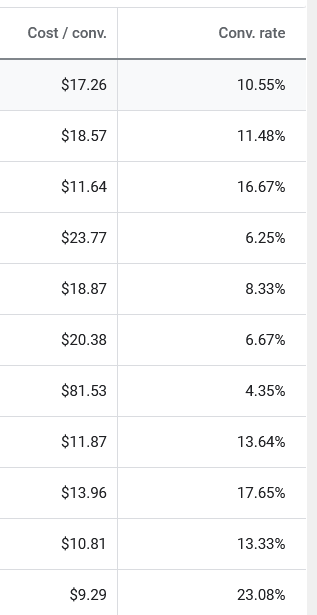
Recently, I provided a small snapshot of accounts struggling with sagging conversion rates. This week, I’d like to address the sneaky phenomenon of accounts boasting pockets of mega-high “conversion rates,” and how that can actually be hurting financial performance.
Of course, I’m not referring to conventional, easy-to-attribute, profitable sales. If your core ad targeting is working above industry benchmarks for certain keywords and products (/services), then bravo!
Many times, though, advertisers are using alternate user behaviors to record a conversion.
Some of these are quite uninformative. For example, we once worked with a local brick-and-mortar furniture advertiser whose only measurable conversion action (by his edict – of course, micromanaging tactics is never a good idea if you’re working with experienced professionals on your marketing team) was a visit to the contact page. There wasn’t much correlation between this metric and in-store sales. It wasn’t even “directional.” We optimized like crazy to that metric, micromanaging keywords, ads, and various bid adjustments. Still, typically successful in-store promotions and long weekend periods one spring actually did worse than average. The optimization was chasing phantom KPI’s. The bar for that particular action was too low. Anyone with a pulse might perform the action.
(Of course, these days there might be many ways to measure ad impact for a store like this – with call tracking or certain user engagement metrics; even methods of correlating store visits with channel ad impressions. Advanced, but doable!)
An even lower bar is set when someone decides to lump multiple conversion types into the active calculation in Google ads by saying “Yes” to several tracked conversion events, including some that set a particularly low bar, like the above. Such uninformative conversion data is little better than CTR’s as a business KPI. Conversion rates of 30%-50% don’t give you any “gold” to optimize to. Rather, you’re walking around with pockets heavy with fool’s gold. (Which isn’t as heavy as gold, which is why you need so much more of it I guess!)
The Case of the Freemium SaaS Provider
In the example I’d like to highlight today, a Software-as-a-Service provider (to protect privacy, we’ll identify the vertical as Lizard Management) has opted to acquire customers via a “freemium” model. Freemium typically provides a product with limited capability for free, sometimes indefinitely, while making ongoing efforts to persuade customers to upgrade to the paid version. This is achieved through some combination of drip email campaigns, cues within the interface itself, including small frustrations that nag the user to upgrade, and a persuasive sales team at the ready to assist the customer in choosing the version that suits their needs. That team will also be ready down the road for further upselling to related products in the suite.
Lizardly, in this case, informs me that paying customer lifetime value averages $1,700.
The desired marketing investment for Lizardly is roughly 4:1 LTV:CAC (lifetime value divided by the cost to acquire a new customer). Both LTV and CAC are tricky to measure, so it’s only an approximation.
If 4% of free product customers upgrade to paid, and our cost per lead via Google Ads is $40 (based on varying conversion rates on clicks whose prices range from $0.40 to over $11.00), then our LTV:CAC is 1.7! Oops.
The natural inclination is to work on optimizing the paid campaigns. If we drive the cost per lead down to $20, and hope that average LTV creeps up a bit via upsells and churn management, we’ll creep that ratio towards our target. Maybe not good enough to sustain a highly profitable business near term, but maybe good enough not to get canned this quarter.

Fig. 1: Not only are some of these query conversion rates sky-high, but the CPC’s and cost per lead are suspiciously low (sub-$2). By contrast, a handful of clicks on the highest-intent queries went through for more than $15.
Speaking of that, how are we going to drive that CPL down to $20? The next logical step is so tempting: to fill the pipeline with junk. That is, non-prospects with extremely low revenue potential who are more than happy to fill in three easy fields on the signup form because they’re bored and curious. It’s window dressing that leads to agonized attempts to “improve the free to paid conversion tactics,” perhaps, but the real source of the problem is the simple “garbage in, garbage out” equation.
What happens in the real world is not an improved marketing investment ratio. Rather, by diving into the bargain bin for super-cheap CPC’s, we get even less than we expected. The ratio of free-to-paid upgrades declines to the point where we see the needle on LTV:CAC stuck right where it was: 1.7. (Indeed, a lot of these “free users” don’t even use the product.)
Clicks are cheap for a reason. Few competitors are bidding on random queries from lost consumers who haven’t ever worked in lizard management.
This kind of hopeful logic (widening out some of one’s marketing spend to a more diffuse audience as a means of growing the “upper funnel” or creating awareness, even brand recognition) does work in some realms.
But not in this realm. Lizardly is a relative newcomer in its vertical, and has risen to 14th place in that vertical through a recent merger. Customers like the product, but there aren’t yet enough of them. And the product is in no danger of going viral because we target some half-asleep consumer doing hobby searches on a Friday night. Wasted spend is just that.
We should fix the paid campaigns by consolidating around search queries and other ad impressions that have a strong likelihood of delivering leads that convert from free to paying customers at a rate more in our sweet spot of 15-20%.
How do we achieve this? In the best-case scenario, we’d have Lizardly’s CRM fully integrated with the paid advertising platform to help “close the loop” on upgrades and even lifetime revenue, tying these back to segments of the campaigns such as keywords. Second-best approaches simply require you use your experience and common sense to stem the tide of no-hoper prospects, or very low value prospects (such as those explicitly looking for free solutions, for example).
Let’s assume we’re able to reach an average upgrade ratio of one in six, to make some easy math. So set that percentage at sixteen point six-six-six-six-six…
By paying much more for some clicks, and eliminating all the really cheap and useless ones, our cost per lead now lands at $88 – after months of relentless optimization (including great quality scores). Terrible? Hardly!
$88 x 6 = $528 to acquire a paying customer. LTV:CAC ratio (salaries and overhead excluded): $1,700 / $528 = 3.22. Boom!
No, we’re not at 4:1 yet. Then again, industry standard is 3:1. If you want to reach 4, do SEO.
Read Part 47: Why Google Ads Smart Bidding 'Works'